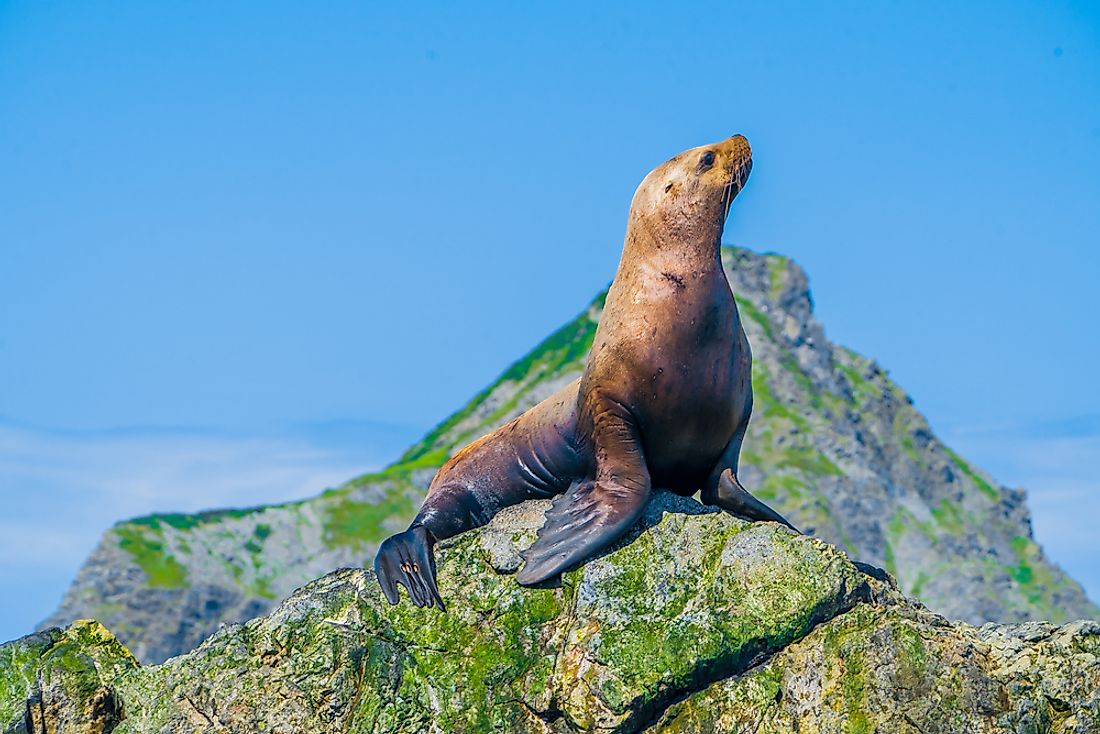Steller Sea Lion Facts: Animals of the Oceans

Steller sea lion, also referred to as Northern sea lion, is the only member of the Eumetopias genus. Among the Pinnipeds, this creature is smaller in size compared to the elephant seal and the walrus. Named after Georg Steller, the naturalist who described the mammal in 1741, the sea lion lives in the North Pacific Ocean. This species is classified as near threatened by the IUCN since they are considered endangered and could face extinction at any time in the future.
Reproduction
The sea lions are polygamous and sexually dimorphic, meaning that the breeding male lions exhibit some significant differences from the female. These creatures gather seasonally on the rookeries to breed and pup, and the males start defending their territories in May before the pregnant Steller lions come to give birth and breed. The females always give birth to one pup from May every year to mid-July, and breeding begins two weeks after giving birth. Their gestation period begins in October. A newborn Steller sea lion weighs between 35 and 50 pounds and stays with its mother on the rookeries for some few months before leaving to look for food.
Behavior
The Steller sea lions live in a vast group just like many other species. These animals communicate using a wide variety of sounds, and female sea lions recognize their young ones by smell and touch. The sea lions feed on a variety of invertebrates and fishes.
Habitat and Range
The Steller sea lion is found all over the northern Pacific Ocean from northern California to northern Japan. These animals breed along the rim of the north Pacific from Kuril Island in Japan to Ano Nuevo Island, California. The sea lion congregates on the rookery sites of different surfaces from rock ledge to sandy beaches on the island. Previously the largest rookeries were in the Alaskan Gulf and the Aleutian Islands, but now they are in British Columbia and the southeastern part of Alaska because of the decline in the Western Alaska sea lion population which started in the 1970s. Although long distance and seasonal movements in response to weather patterns and prey availability are frequent, these animals rarely undertake great migrations.
Diet
Although sea lions consume a wide variety of food present in the water, what they eat depends on the season and where they live. Their typical diet includes different types of fishes, invertebrates, and smaller sea lions or other small species if their other food sources are scarce.
Description
The coloration of the adult sea lion ranges from pale yellow to tawny or even reddish. Newborn pups are black and their color stays that way for many months. Both male Steller sea lions and their female counterparts grow swiftly until their 5th year when the growth rate of the female reduces. The male increases in size until their 8th year when their sexual traits begin to appear. Adult females are between 7.5 to 9.5 feet long and weigh between 530-770lbs. Males weigh from 990 to 2,470lbs with a length of between 9.3 feet to 10.7 feet. Males have wider necks and chests, flatter snouts, broader foreheads, and thick coarse hair around their necks.







